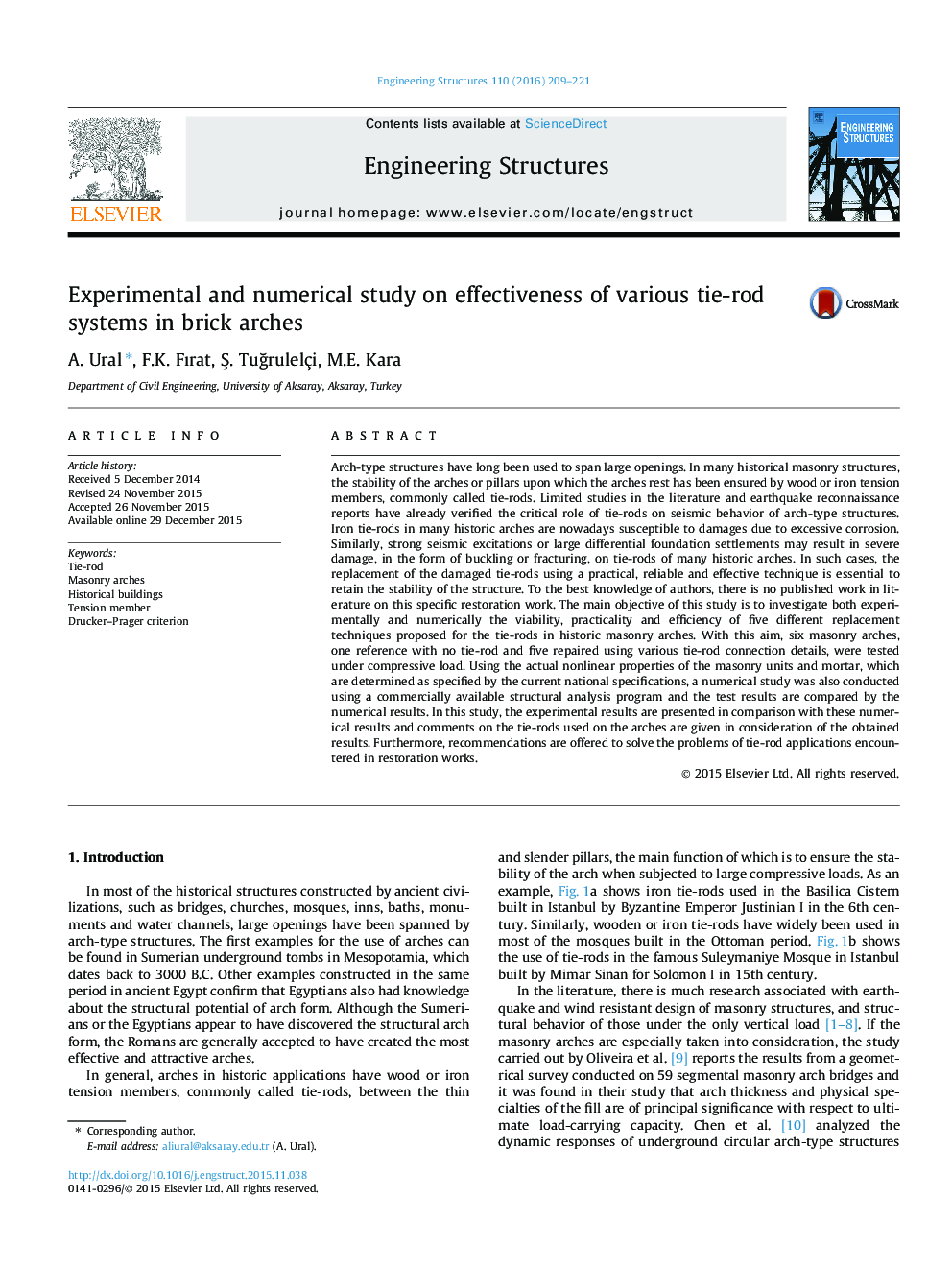| Article ID | Journal | Published Year | Pages | File Type |
|---|---|---|---|---|
| 265906 | Engineering Structures | 2016 | 13 Pages |
•6 experimental models were tested under vertical load, one model with no tie-rod and five models with different tie-rods.•The effects of tie-rods are examined.•The tie-rods are used in different connection ways.•The capacity of the arches with tie-rods increases to at least 180% in comparison with arches with no tie-rod.
Arch-type structures have long been used to span large openings. In many historical masonry structures, the stability of the arches or pillars upon which the arches rest has been ensured by wood or iron tension members, commonly called tie-rods. Limited studies in the literature and earthquake reconnaissance reports have already verified the critical role of tie-rods on seismic behavior of arch-type structures. Iron tie-rods in many historic arches are nowadays susceptible to damages due to excessive corrosion. Similarly, strong seismic excitations or large differential foundation settlements may result in severe damage, in the form of buckling or fracturing, on tie-rods of many historic arches. In such cases, the replacement of the damaged tie-rods using a practical, reliable and effective technique is essential to retain the stability of the structure. To the best knowledge of authors, there is no published work in literature on this specific restoration work. The main objective of this study is to investigate both experimentally and numerically the viability, practicality and efficiency of five different replacement techniques proposed for the tie-rods in historic masonry arches. With this aim, six masonry arches, one reference with no tie-rod and five repaired using various tie-rod connection details, were tested under compressive load. Using the actual nonlinear properties of the masonry units and mortar, which are determined as specified by the current national specifications, a numerical study was also conducted using a commercially available structural analysis program and the test results are compared by the numerical results. In this study, the experimental results are presented in comparison with these numerical results and comments on the tie-rods used on the arches are given in consideration of the obtained results. Furthermore, recommendations are offered to solve the problems of tie-rod applications encountered in restoration works.
